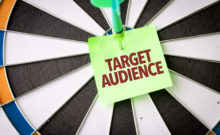Content marketing is often what sets great brands apart from their competitors. In the age of digital advertising, companies that choose to simply churn out bland price-point or feature/benefit ads risk getting lost in the shuffle. While they’re doing that, other businesses are thriving thanks to the connections they’re making with their audience. This sounds simple enough but getting started can be a tough task for marketers. Here are some pointers to help.
Personify Your Audience
When creating content, the first step is identifying your target audience demographically. There are many parameters you can choose from, such as age, income level, gender, or geographic location. Once you know who your messaging is aimed towards, the next step is creating a persona for each key audience group. Let’s say your primary customer is a 40-year old married mother of two teenagers who makes $50,000 a year. You should use this data to create a backstory for her. Give her a name like “Sue,” or “Val.”
Identify Their Pain Points
As you build your target audience member’s persona, you need to consider what is important to them. What do they like to do? What keeps them up at night? What content will appeal to them? “Pain points” are problems they need solving in their lives. Determine what Sue and Val need help with and provide solutions. A few short years ago, you may have been limited by trying to cram your message into a short TV ad, billboard, or newspaper page. With digital content marketing, you can take more time by creating longer videos or slideshows that address their pain points and hopefully connect with them emotionally.
Schedule Content Around This Data
Digital marketing’s success relies on highly targeted ad campaigns. Programmatic buying allows advertisers to drill down on the demographics we discussed earlier by serving ads to the specific audiences you choose. But timing is just as important. You need to consider when your target audience is likely to be visiting the platform on which your ads are running, and schedule them then. Even if you are buying paid ads on social media pages, it’s important to push out new content frequently to appear in the platform’s algorithms and stay at the top of your audience’s feed. Build a posting calendar of when you schedule your content. If you have more than one target demo, use that to your advantage and alternate to fill your calendar.
Connect with your audience by really taking the time to discover who they are. It will pay off!






